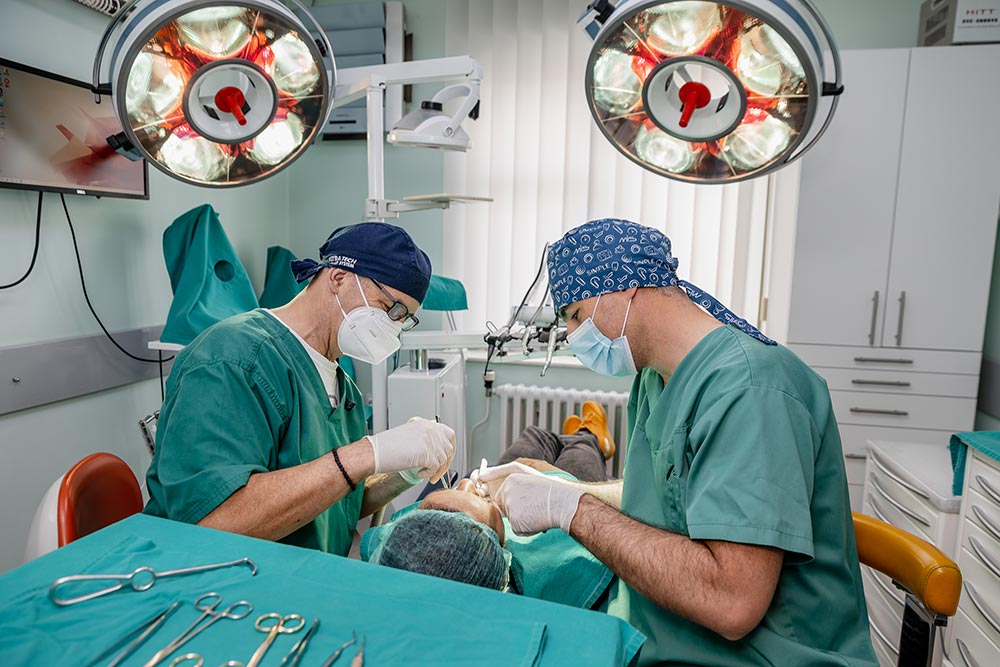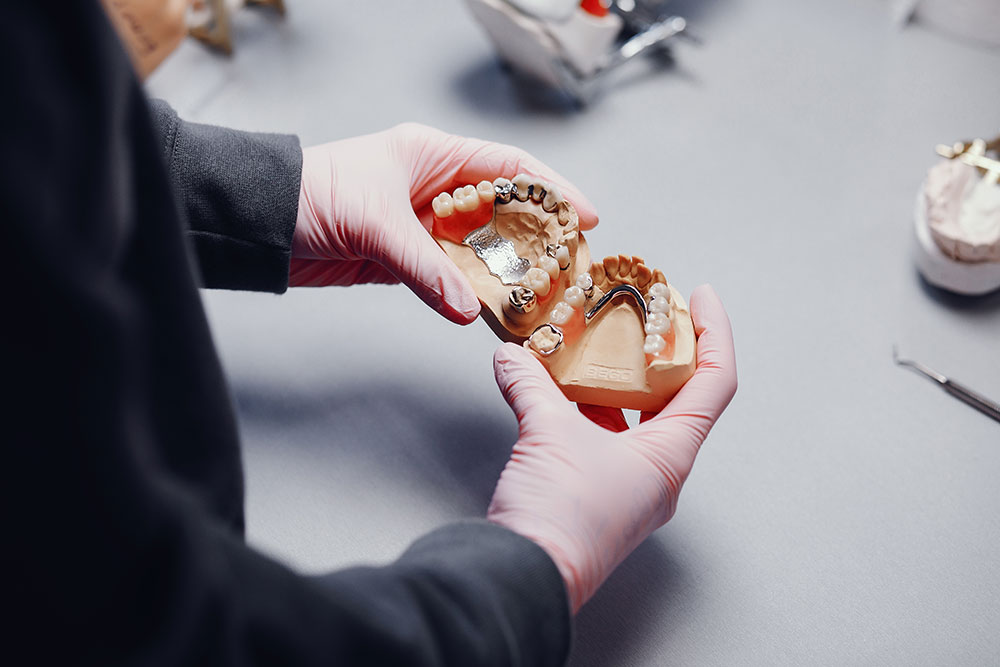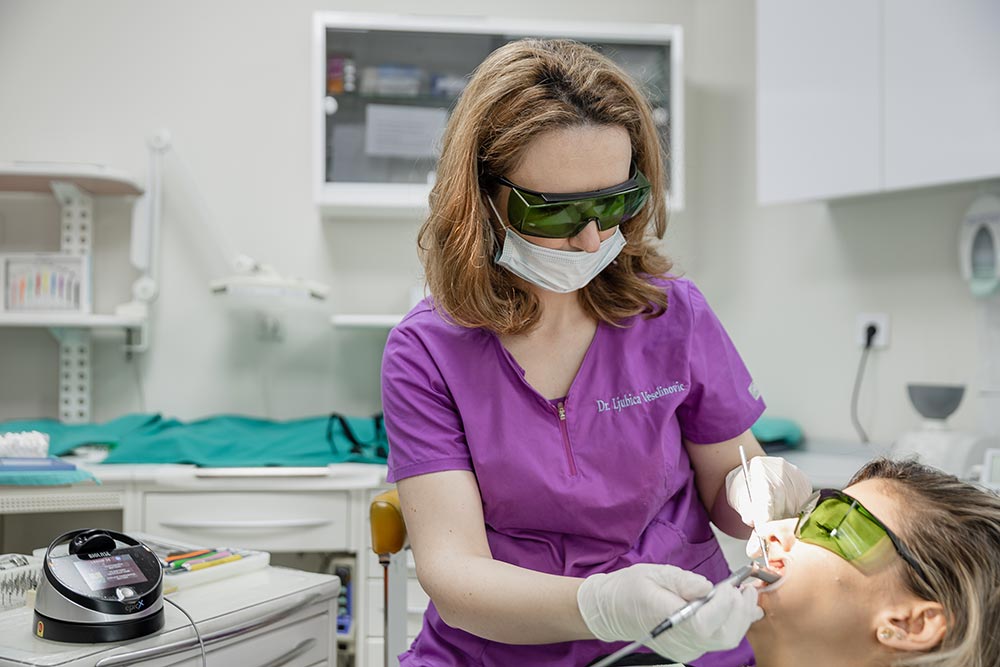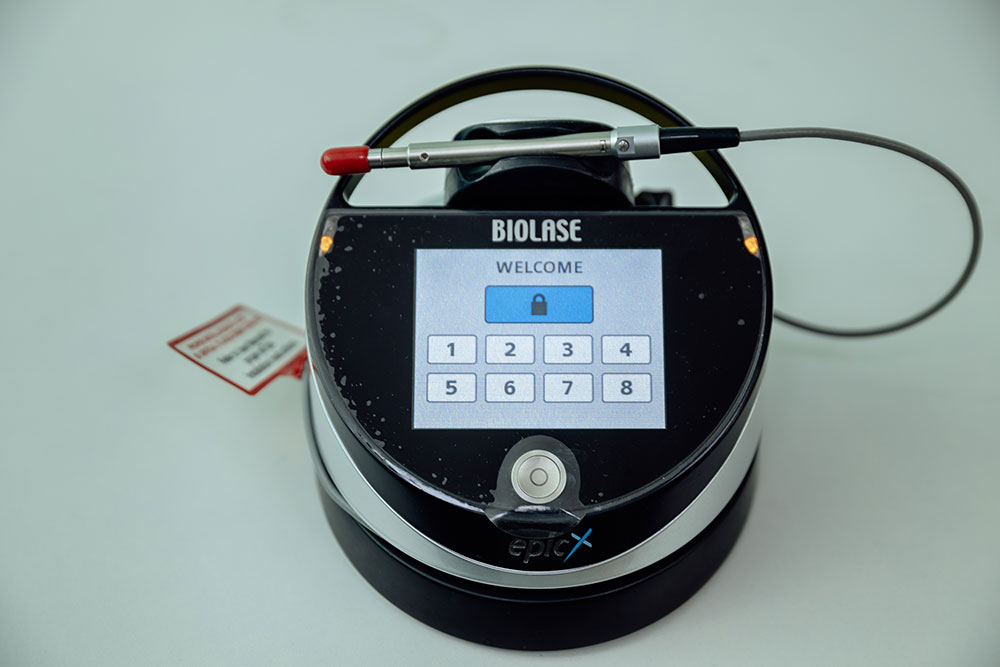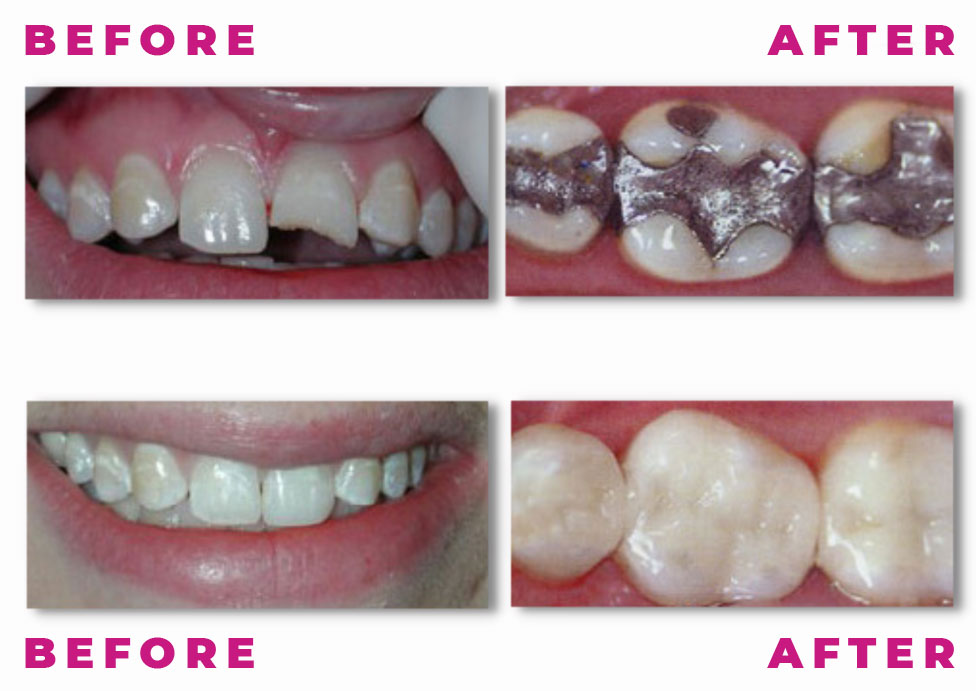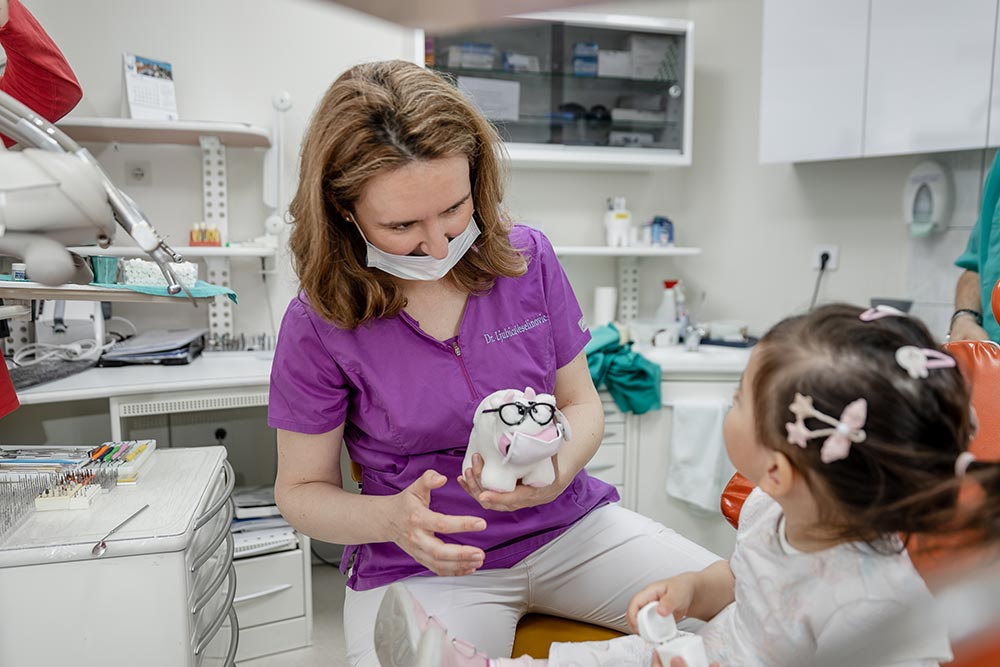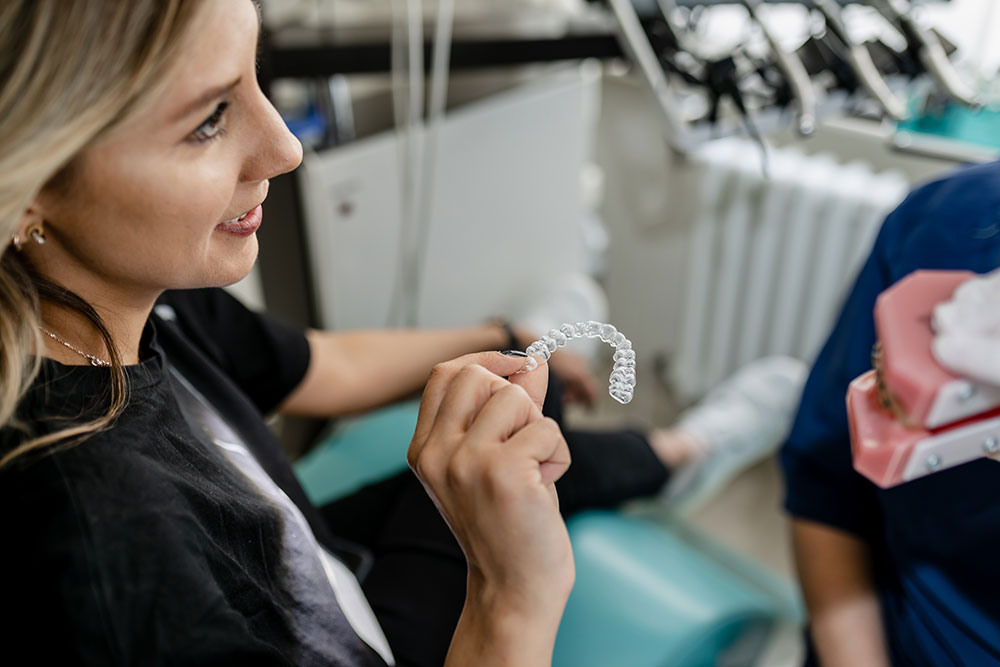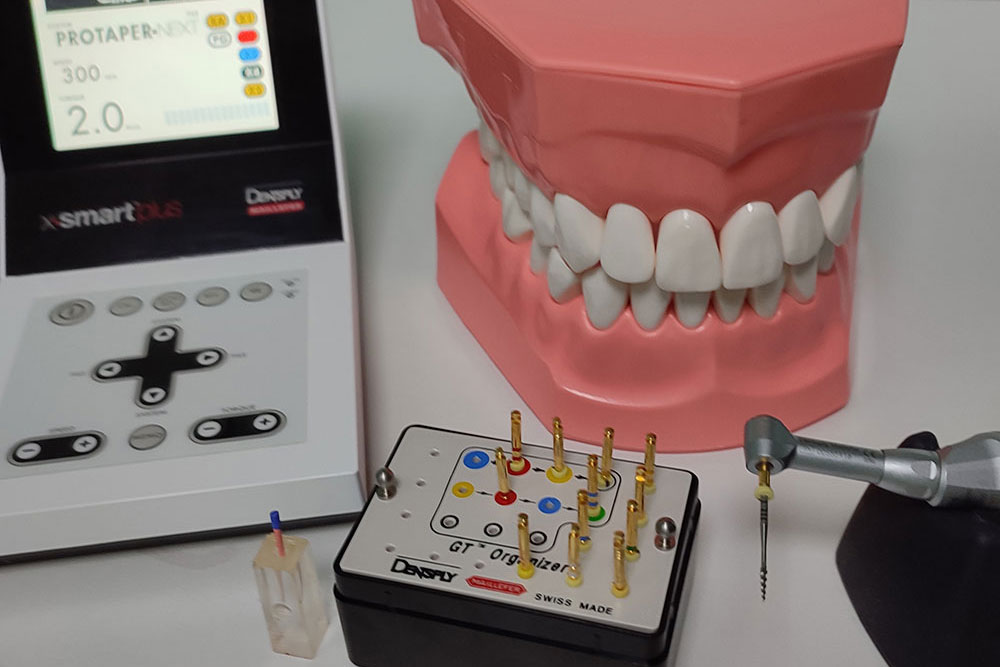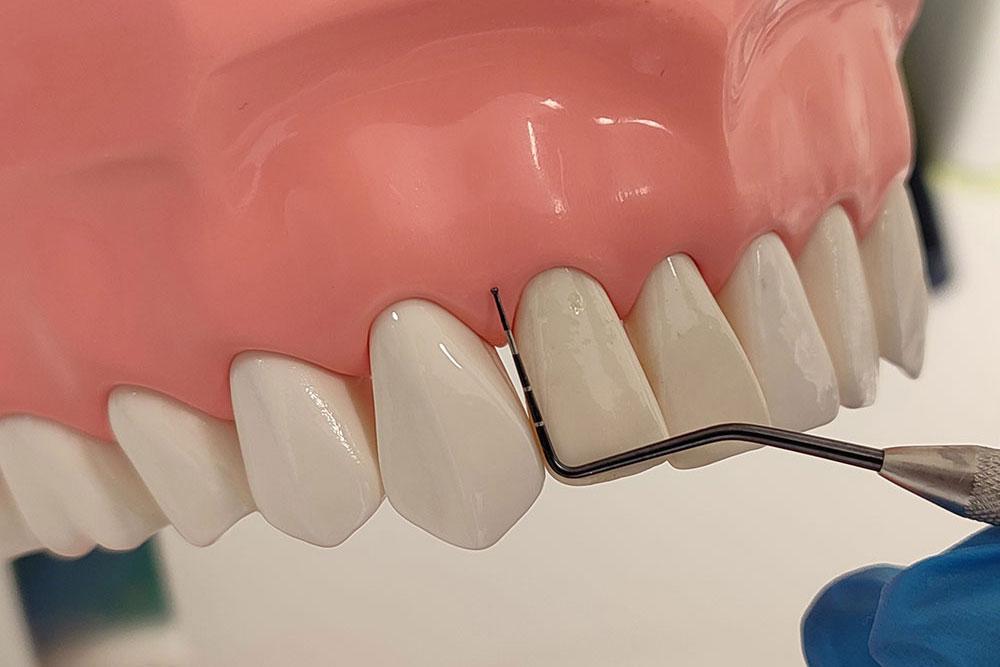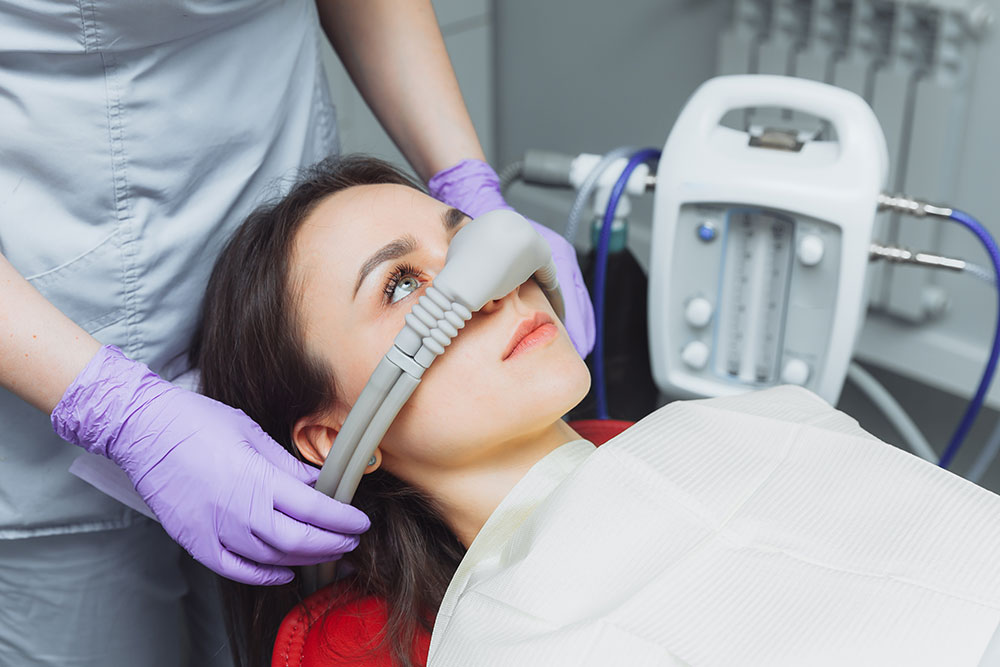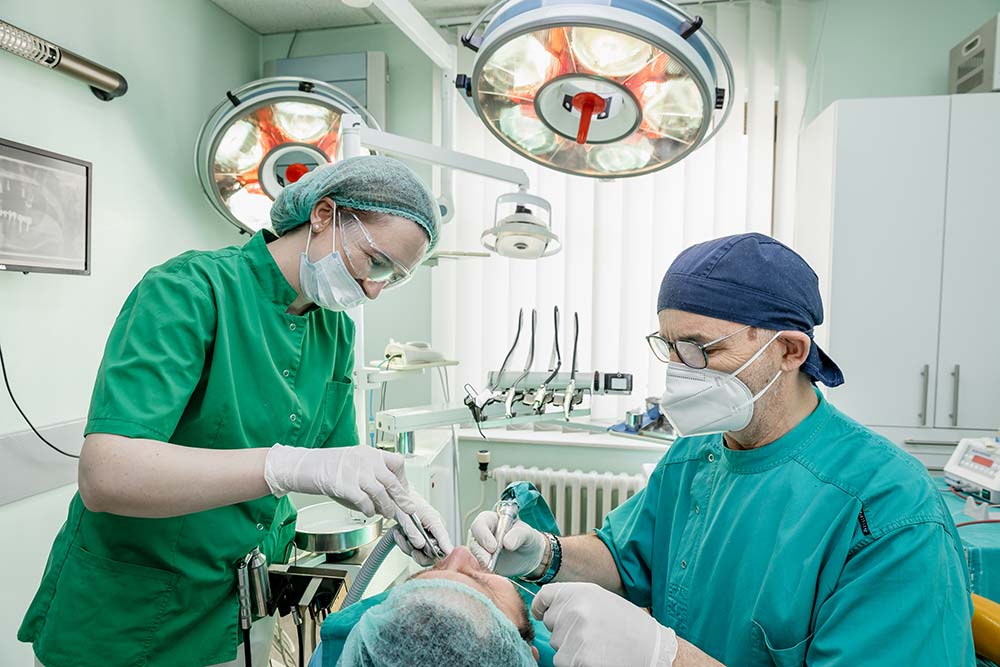Dental interventions
Oral surgery
Oral surgery is a dental discipline that includes all interventions on teeth, alveolar tissue, bones of the upper and lower jaw, as well as the surrounding oral and facial structures.
Dental prosthetics
Dental prosthetics is a specialist area of dentistry that, in simple terms, enables the return of lost teeth. Dental prosthetics is divided into fixed and mobile and foresees the application of the following prosthetic compensations:
- crown;
- inlay, onlay and overlay;
- facet (veneer);
- implants;
- bridges;
- prosthesis.
Aesthetic dentistry
Aesthetic dentistry helps in solving various problems related to the beauty of the teeth.
In dental aesthetics, many means and methods are used to improve the appearance of teeth:
- dental fillings;
- facets (veneers / thin layers);
- dental crowns;
- teeth whitening;
- dental jewelry.
Soft tissue laser therapy
Laser soft tissue therapy is becoming increasingly common in dentistry today due to the numerous possibilities it offers.
The laser is widely used in dentistry and has practically no harmful effects. Therefore, it can also be used in children. Laser therapy of soft tissues involves several interventions:
- modeling of soft tissues;
- all types of cuts;
- biopsy;
- exposure (revealing) of implants;
- auxiliary periodontal therapy;
- treatment of canker sores, herpes, etc.
Conservative dentistry
Conservative dentistry is a part of dentistry that is involved in the treatment of damaged teeth.
The most common diseases for which patients turn to the dentist are damage to the hard tissues of the teeth:
- caries;
- fracture;
- erosion;
- dental nerve inflammation;
- composite fillings;
- dental veneers;
- conservative tooth extension.
Children's and preventive dentistry
Children’s and preventive dentistry is one of the most important dental fields since it deals with the prevention of diseases and disorders of the jaws and teeth
The goals and tasks of children’s and preventive dentistry are the treatment of children’s teeth and, of course, the promotion of good health habits from an early age.
The subject of pediatric dentistry are:
- protection of milk and permanent teeth of children;
- prevention and rehabilitation of caries;
- elimination of the consequences caused by traumatic dental injuries;
- removal of hereditary anomalies.
Orthodontics
Orthodontics, i.e. orthopedics of the jaws, is a branch of dentistry whose subject is the diagnosis and treatment of irregularities of the teeth and jaws in children and adults. Those are improper bite and irregularity of the arrangement and position of the teeth.
During orthodontic therapy, the following are applied:
- mobile prostheses (movable plate devices);
- fixed prostheses;
- aligners (foils for straightening teeth);
- Mini orthodontic implants.
Endodontics
Endodontics is a field of dentistry whose goal is the treatment of diseased dental pulp (both in the crown and root part of the tooth), as well as the tissues surrounding the root of the tooth.
In cases where advanced caries or dental trauma cause the pulp of the tooth to become diseased, then the tooth can be saved with endodontic treatment.
Endodontic therapy includes: proper diagnosis, canal instrumentation and root canal filling.
Periodontology
Periodontology is a field of dentistry whose subject is the peridontium and soft tissues of the oral cavity.
The peridontium refers to the supporting structure of the tooth (gingiva, cementum and alveolar bone).
The diseased supporting apparatus of the teeth is subject to two types of therpy:
- causal;
- surgical.
X-ray diagnostics – radiology
X-ray diagnostics, i.e. radiology, represents the basic diagnostics during dental treatment because it enables a general check of the teeth, roots and surrounding bone structure.
Orthopantomogram (orthopan) X-rays show a wide picture of the jaws, teeth, maxillary sinus, nose and temporomandibular (jaw) joints.
These X-rays do not find all cavities, but they do indicate problems such as impacted teeth, bone abnormalities, tooth and jaw cysts, solid bone growths (tumors), tooth infections and fractures, tooth root fractures, and jaw fractures.
Sedation
Sedation is a special type of anesthesia, which is used not only in dentistry but also in other medical branches.
It is used in patients who cannot control their fear of dental intervention or in those who cannot tolerate it due to other objective psychophysical reasons.
In this way, the anxious patient is provided with comfort during dental procedures, especially the longer and more complex ones.
That’s why sedation is equally useful for invasive procedures, such as oral surgery and implantology interventions, as well as simple ones, such as tartar removal and teeth whitening.
Dental tourism
In recent years, dental tourism has become very popular among foreigners, but also among our compatriots who live and work abroad. In order to facilitate the treatment and stay of our patients from abroad, we have provided complete diagnostics and treatment at the clinic:
- clinical examinations by top oral surgeons and implantologists, as well as orthodontists;
- X-ray diagnostics and radiology;
- all interventions in the domain of oral surgery;
- installation of dental implants and preparatory operations (jawbone augmentation and sinus lift);
- dental prosthetics, etc.

